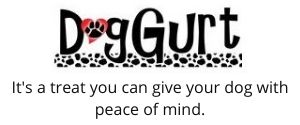- Do you subscribe to Dharma Dog Training’s Newsletter? You should.
- A Unique Campaign from The Humane Society of the United States
- Rabid bats in Omaha- Stay safe, prepared with these tips
- Springtime Activities in Omaha
- Mill Dog Monthly from Bailing Out Benji
- World Spay Day, Legislative Alert in Nebraska
- Attend the Nebraska Rescue Council’s monthly meeting this Saturday
- Five Hard-to-Ignore Reasons to Adopt!
- Paws in Pink to Benefit Breast Cancer Foundation
- VCA, Inc. Acquires MidWest Vet Specialists from Kansas State University
Does your pup have separation anxiety? Here’s help.

Our staff at Pets in Omaha is always bringing you great event info, well-researched content, and profiles on people and businesses who love animals. Sometimes, however, like with training and veterinary care, we’re much more comfortable leaving it to the pros.
Carl Owens is a Licensed Vet Tech at The Pet Clinic in Omaha and has compiled the following information and advice for us on the topic of separation anxiety in dogs. Enjoy this very thorough content and please use our Contact Page with questions on this and any other veterinary issue you may have!
About Owens: Carl joined the clinic in August of 2005. He graduated from Vatterott College in 2007 with a degree in veterinary technology. Carl has a special interest in canine behavior and has helped many clients with behavior problems with their dogs.
Are you a dog owner who dreads putting on your shoes, grabbing your jacket, and heading out the door? Do you worry about the destruction you may find when you return? These may sound like strange questions, but people who have a dog that suffers from separation anxiety know exactly what I mean.
Right now, your dog sees you fix your hair, get dressed, make your lunch, get your keys, put on your shoes and walk out the door. In his eyes, you may never return and he is going to be stuck in this enclosure with nothing to do, no way out. Panic follows. In the dog world, they vocalize to get other pack members to know they are in distress, they will dig or chew to get past an object in their way, and they will move rapidly to get back to their pack. In our eyes, we get home and the neighbor has left a nasty note because the dog has been barking, the carpet is destroyed by the door, the remote is in pieces, shoes are shredded, and we are furious! Meanwhile, your dog is thinking, “Thank God, you’re home!”
In cases where the dog has been punished for these behaviors, you may see his posture change when you return home. He is no longer ecstatic to see you but rather timid and shy. To us, he looks very sorry for what he has done. In fact, this posture is his way of diffusing the situation. Dogs are very good at reading posture and this is a very large part of how they communicate with each other. He sees you come in the door, you see the mess, and immediately your posture becomes tense, your facial expressions become serious and yelling may follow. He now associates you coming home with a scolding.
I had a very similar experience to this scenario with my own dog, Saki, an energetic 80 lb. Chocolate Lab mix. On several occasions, we returned home to find various items chewed to pieces. This was early in my career as a vet tech and before I had learned much about canine behavior. I knew discipline must come within three seconds of the act or the association isn’t made. I explained this to my wife and she went along for the ride; that is until Saki found great pleasure in chewing up her favorite shoes. On this occasion, Saki got an ear full. Bad girl, no, no, no, with half a shoe waving in her face. What I noticed was the next time we returned home, the happy tail wagging Saki was now peering out from the dining room, ears back, tail tucked, the look of shame on her face.
For some time, this was the Saki we were coming home to. Sometimes there may have been a chewed up item, sometimes not, but the same guilty Saki remained. She just figured if we were coming home, she had better diffuse the situation as best she could– and this was through her posture. This is important to understand because this type of punishment can certainly harm the relationship between man and dog AND very easily worsen the anxiety. Saki had several other behavior issues, some of which may have been worsened by my corrective based training methods. She is the reason I became interested in canine behavior. I miss her very much, and wish I knew then what I know now.
Separation anxiety is a condition which can affect any dog at any age, but it tends to be more common in dogs who have been adopted from a shelter. Puppies can have a form of the condition, but symptoms normally subside within one or two months. Between 14% and 29% of dogs show symptoms consistent with separation anxiety and only 13% of those owners seek professional help. Other possible reasons for the condition include a change in schedule or routine, moving into a new home, illness early in life, or owners who rarely need to leave the home.
Symptoms of separation anxiety can range from mild to severe. They are broad and can include pacing, panting, barking, drooling, urinary and fecal accidents, destructive behavior, self-mutilation, escaping from the crate or other enclosures, decreased appetite, hair loss, rapid heart rate, diarrhea and vomiting just to name a few. These behaviors are generally displayed within 30 minutes of the owner leaving the home and can begin with mild symptoms while the owner prepares to leave. Other symptoms may be apparent while the owner is home and can include following the owner, attention seeking, anxiety at departure, anxiety if unable to reach you or your family, and hyperactive greeting when you return home. With all of these difficulties, the human/animal bond may be strained. We need to understand that a dog’s perception is also their reality and these behaviors are not displayed out of spite or anger toward you, but out of a combination of instincts, fear and anxiety. Separation anxiety is best prevented by using positive reward based training techniques in multiple locations early in life. Ensuring your dog is well socialized and placed in situations where he will remain comfortable and fear free will also decrease the risk of separation anxiety.
Separation anxiety is diagnosed by your veterinarian and is based on the history you provide. It is also very helpful to video your pet showing the problem behavior while you’re away. Fairly inexpensive video cameras are available that will allow you to view your dog’s behavior on your cell phone. This will greatly aid in the management and treatment of your pet and will provide you with objective information regarding the treatment’s effectiveness. It is recommended that all possible medical conditions that could be responsible for the symptoms are ruled out prior to recommending behavior modification. This may include a full physical exam and lab work such as a urinalysis, fecal exam and blood work. After a diagnosis is made, they will give you information on treatment or refer you to a behaviorist. It is also up to your veterinarian to prescribe medications if the condition is at a level that is unmanageable or if the animal has a history of causing harm to itself by attempting to escape from an enclosure.
There are many different options to aid in the treatment of separation anxiety. Some are over the counter such as Adaptil. This is a pheromone that has been recreated in a lab and mimics the same pheromone which is released from the mother while feeding her puppies. When the pheromone is sensed, it has a calming effect on the puppies, preventing them from acquiring possible lifelong phobias. The pheromone is also very helpful for dogs of all ages with all kinds of phobias. The “Thunder Shirt” may also help with this condition. It is a snug fitting shirt which helps the dog feel secure and works in the same manner as swaddling a baby. Sometimes music can be helpful in treatment as well. “Through a Dogs Ear” has been designed specifically for dogs with phobias and has been found to help calm anxious dogs. There are several nutraceuticals, which are natural supplements, available that may be helpful for mild to moderate cases. If the condition is severe the doctor may recommend a pharmacologic medication, such as Prozac (fluoxetine) or Alprazolam (Xanax). Prozac is a long term medication that must be given every day, while Alprazolam may be prescribed as needed. These medications are not designed to sedate the animal, but rather to help them cope with stress and make behavior modification easier. You will want to monitor your pet closely when starting the medications and notify your doctor if sedation, vomiting, diarrhea or unwanted behavior changes occur. It is likely that the doctor will recommend routine blood samples to ensure the animal is tolerating the medications well.
Prior to starting behavior modification, you need to make sure your dog’s basic needs are being met. They need to receive at least three 15 minute walks outside daily, they need strenuous exercise –this could be fetch, tug or running on the tread mill– and 2-3 sessions of positive reinforcement training every day. Affection from their family is always needed as well. These physical needs are based on the breed and personality of the dog. A Bulldog’s physical requirements are going to be different then a Labrador’s requirements, so consider this when implementing your plan.
Once the diagnosis is made it is time to implement a behavior modification plan to change your dog’s interpretation of what he knows to be true. This will include several exercises. First, you want to change the way he feels about you leaving the house. This is accomplished by introducing low key departures and returns. That means 15 minutes prior to leaving the house all attention stops including physical gestures, eye contact and verbal cues. It may sound harsh but sometimes the attention you give your dog prior to leaving makes the process much more difficult for them. The same rule is followed when you return home. No attention of any kind should be given unless calm, independent behavior is shown. If the dog must go outside, simply walk to the door and let the pet out, ideally we would even wait by the door without saying anything. When the dog figures out to sit, the door opens and the dog goes out. If the dog lacks all self-control, wait for a calmer posture and build on that. Another great exercise is hide and seek with treats. The dog is taught this exercise prior to you leaving the house and it is performed daily without you leaving. Start by teaching sit and stay while treats are hidden around the house, then say “find it!” When the dog is able to do this well, he is ready to perform while you leave for a short time. When done consistently, the dog will begin to look forward to you leaving because he gets to play a fun game and find delicious treats. Next, you need to get him to disassociate the cues that tell him you are going to leave. This is done by getting up, putting on your shoes, picking up the keys and then doing the dishes or other activities around the house. The process is repeated with all departure cues. If the dog is sensitive to the sound of the door, you may need to include this in your plan. Open the door, shut it, and continue on with a project in the house. It is important that you ignore the dog at these times. Eye contact and physical gestures provide stimulus for the dog which we want to keep under control.
When you are not actively performing these exercises, triggers need to be avoided. When the triggers cannot be avoided, the dog may be placed outside while you get ready. This will decrease the progression of the anxiety. Depending on your dog, you should see a decrease in the anxiety within a few days. After he is remaining in a calm state during these exercises, you’re ready for the next step which is desensitizing him to you leaving. Ideally, you leave the house 10-20 times per day for approximately 30 seconds then return again ignoring your dog. Practicing this exercise will reassure him that you are coming back and teach him that your return is not that big of deal. Treats can be left at these departures to make him look forward to you leaving. Next, you can open your garage door, back out, and return following the same rules. Your time away should be increased gradually based on the dog’s response. How fast you transition depends on your dog and your consistency. If after two weeks no improvement is seen, consult your veterinarian for possible medications or supplements discussed earlier. Being prepared will greatly aid in the treatment as rushing around heightens anxiety for us and our pet. During this time, it is of the utmost importance that independent behavior is rewarded and attention seeking behavior is ignored. If your dog approaches you and demands attention, you may try turning your head away from the dog and crossing your arms. This often sends a signal that you do not want to interact at that time and it is likely he will go lay down. After he lays down for a short time, call him to you, ask or wait for him to sit, and give all the attention you want. After you are done giving him attention, gently tap him on the head or side 3 times and say “all done” with your palms up, then discontinue attention. This is a way to clearly communicate to your dog when he can and cannot receive your attention. Using rewards and training your dog to lay on a mat or bed is also very helpful. He learns this is a pleasant and safe place to be, with or without his people.
Another great program to follow is the “Nothing In Life For Free” program. What this means is your dog has to show you an appropriate action to receive anything. This includes eating, getting attention, going outside, coming inside, getting on the couch- if this is allowed, entering and exiting the car and any other valued resource.
If your dog must be kenneled, a Kong with frozen goodies packed in it can be very helpful.Favorites include peanut butter, cottage cheese, yogurt and bananas. Whether or not the treat is eaten is a valuable piece of information. High levels of stress shut down the dog’s appetite. If this occurs, consult your vet and begin conditioning to the crate. Crate games are great exercises for this and examples are available online.
When you are not actively working with your dog, management is key. Options include doggy day care, and hiring a dog walker. Some people think about adding another pet as a companion, but this is rarely successful. If you have questions about treatment don’t be afraid to ask your veterinarian. They are there to help you and your animal. If they do not have the resources to help you, they will refer you to a person who does.
It is easy to get discouraged during the training process, but with a little time, patience, understanding and a sound treatment plan, improvements will be seen. Before you know it, you will be walking past your best friend while he rests comfortably and your bond will never be stronger.
Related Posts
Latest News
-
Join Us at Pick A Pooch 2025: A Fun-Filled Weekend for the Whole Family
A Fun-Filled Weekend for Pet Lovers and Families Alike Mark...
- Posted 1 year ago
- 0
-
Beardmore Presenting Sponsor At This Years Pick-A-Pooch event
🐾 We are thrilled to announce that Beardmore Subaru is...
- Posted 1 month ago
- 0
-
How Having A Pet Can Change Your Life
Having a pet can open your heart in ways that...
- Posted 3 months ago
- 0
-
How To Improve The Life Of Your Senior Pet
Do you have an elderly fur baby and want to...
- Posted 3 months ago
- 0
-
Springtime Activities To Enjoy With Your Furry Friends
Are you preparing for warmer weather and want some ideas...
- Posted 4 months ago
- 0
-
Pros And Cons Of Microchipping Your Pets
Have you considered whether your pets should be microchipped and...
- Posted 5 months ago
- 0
-
The Best New Fun Toys For Dogs And Cats
The Best New Fun Toys For Dogs And Cats Did...
- Posted 5 months ago
- 0
-
Heartfelt Ways To Show Your Pet You Love Them
Did you know there are more ways to show your...
- Posted 6 months ago
- 0























You must be logged in to post a comment Login